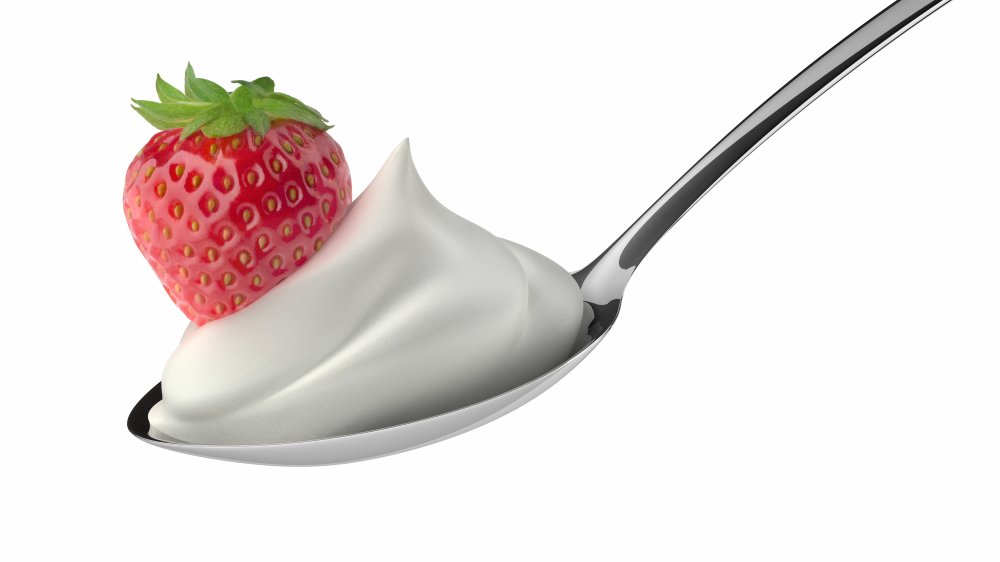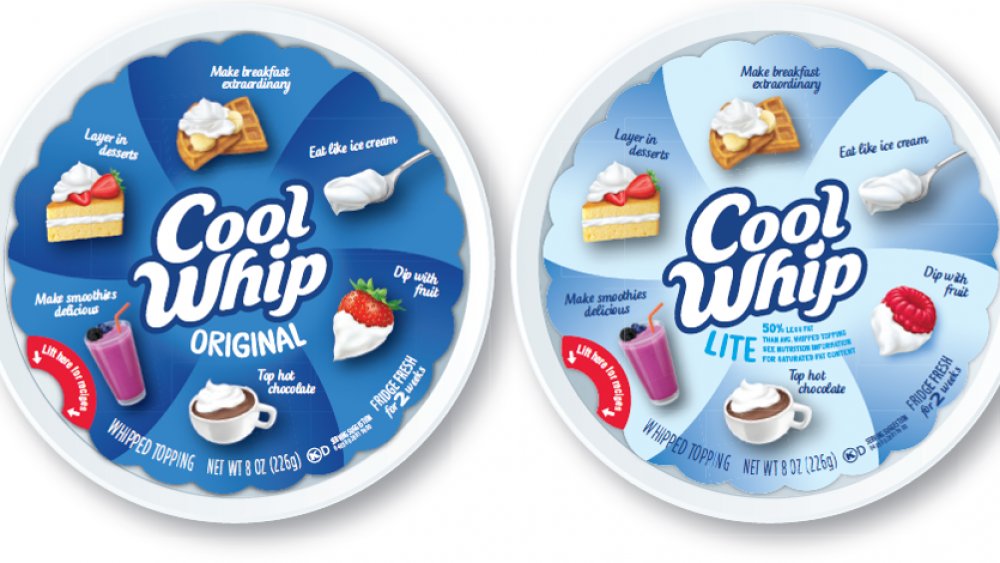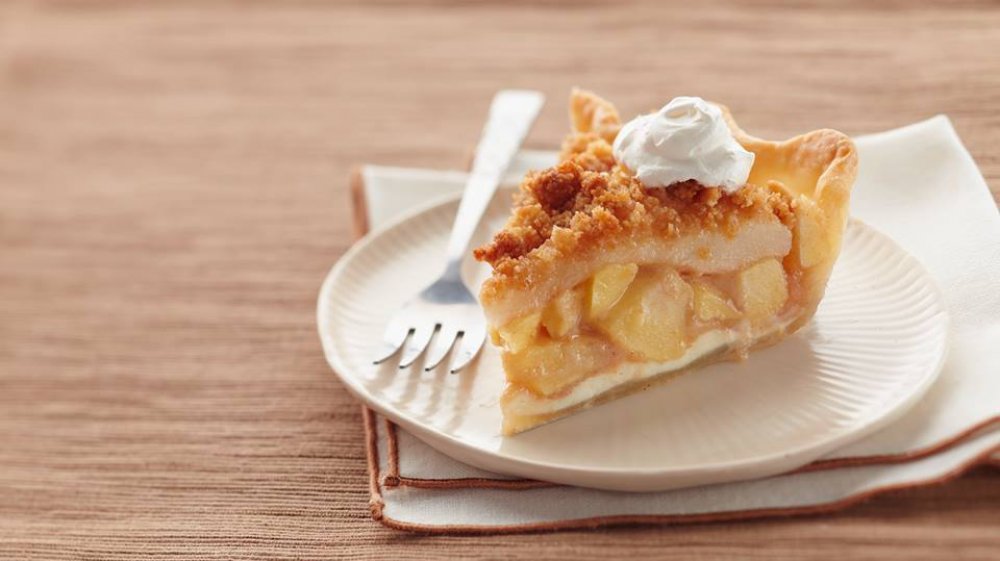Why You Should Think Twice Before Buying Cool Whip
With more than twelve different varieties of Cool Whip, it's clear we dig the stuff. The Original Whipped Topping took our freezers by storm back in 1966, and 54 years later, we're still creating fluffy desserts, and putting dollops of it on everything.
We have more choices than our grandmas did, with frozen concoctions like Birthday Cake, Lite & Fluffy, Fat Free, Ultra Low Fat, Light, Extra Creamy, and Sugar Free (via Cool Whip). The product line has even permeated other parts of the grocery store, with refrigerated aerosol cans, and a shelf-stable boxed mix. While there's no shortage of Cool Whip varieties, one thing is consistent across the product line – the ingredient list.
It doesn't matter which one you choose: all Cool Whip products have ingredient labels similar to the Original, which reads like this: water, corn syrup, high fructose corn syrup, hydrogenated vegetable oil (coconut and palm kernel oils), skim milk, and less than 2 percent of light cream, sodium caseinate (derived from milk), natural and artificial flavor, xanthan and guar gums, modified food starch, polysorbate 60, sorbitan monostearate, sodium polyphosphate, and beta carotene (for "color"; although it's hard to know which color, since the mixture is white). Even the Sugar Free has corn syrup, albeit with an asterisk stating that it adds a "trivial amount of sugar" (via Cool Whip).
You need a science degree to understand the label
Let's start with the sugary syrups – corn syrup and high fructose corn syrup. According to the Mayo Clinic, eating too much added sugar, including the sweetness from corn syrup and its spinoffs, contributes unnecessary calories that are linked to weight gain and the associated risk of heart disease, type 2 diabetes, metabolic syndrome, and high triglyceride levels.
Now for hydrogenated oils, which are made by turning liquid oils into solids (by adding hydrogen). According to Healthline, hydrogenated oils are added to enhance taste, texture, and shelf life, but the hydrogenation process creates artificial trans fats. Eating trans fats raises your bad (LDL) cholesterol levels and lowers your good (HDL) cholesterol levels, which increases your risk of heart disease, stroke, and type 2 diabetes (via American Heart Association).
On to sodium caseinate, the sodium salt of casein (a milk protein), which is a food additive used as a thickener and stabilizer (via FoodAdditives.net). While the FDA deems it safe, it's made with milk, which could pose a problem for folks with lactose intolerance (via Go Dairy Free).
What are the "natural and artificial flavors"? Hard to know. According to Organic Authority, they could be made with virtually anything, from vegetable and/or animal sources, they may contain gluten, and they may be various forms of MSG.
How many stabilizers does a whipped topping need?
Xanthan and guar gums are naturally-derived, complex carbohydrates used to thicken and emulsify foods (via U.S. News & World Report). Sounds pretty straightforward, but note that guar gum is also used as a laxative, and as a treatment for diarrhea, and irritable bowel syndrome (via RxList).
Polysorbate 60 is a chemically-derived food additive made from sorbitol, stearic acid, and ethylene oxide (via FoodAdditives.net). Ethylene oxide (EtO) may help create a food stabilizer, but it's also used as fumigant/disinfectant in some agricultural products, and as a sterilant for medical equipment and supplies (via OSHA).
Sorbitan monostearate is (yet another) chemically-made substance known as synthetic wax (via Cookipedia). It's been linked to skin, eye, and respiratory irritations, as well as stomach disorders (via Organic Authority).
According to a study published by Deutsches Ärzteblatt International (via National Library of Medicine), sodium polyphosphate, when used as a food additive, is linked to accelerated aging and vascular damage. Some researchers have concluded that people should limit their intake of food with added sodium phosphates (via Healthline).
Now that you're informed, go ahead and put a dollop or two on your apple pie and leave it at that; refrain from sitting in front of the TV with the whole tub and a spoon.
Robin Miller is a nutritionist, chef, and food writer.


